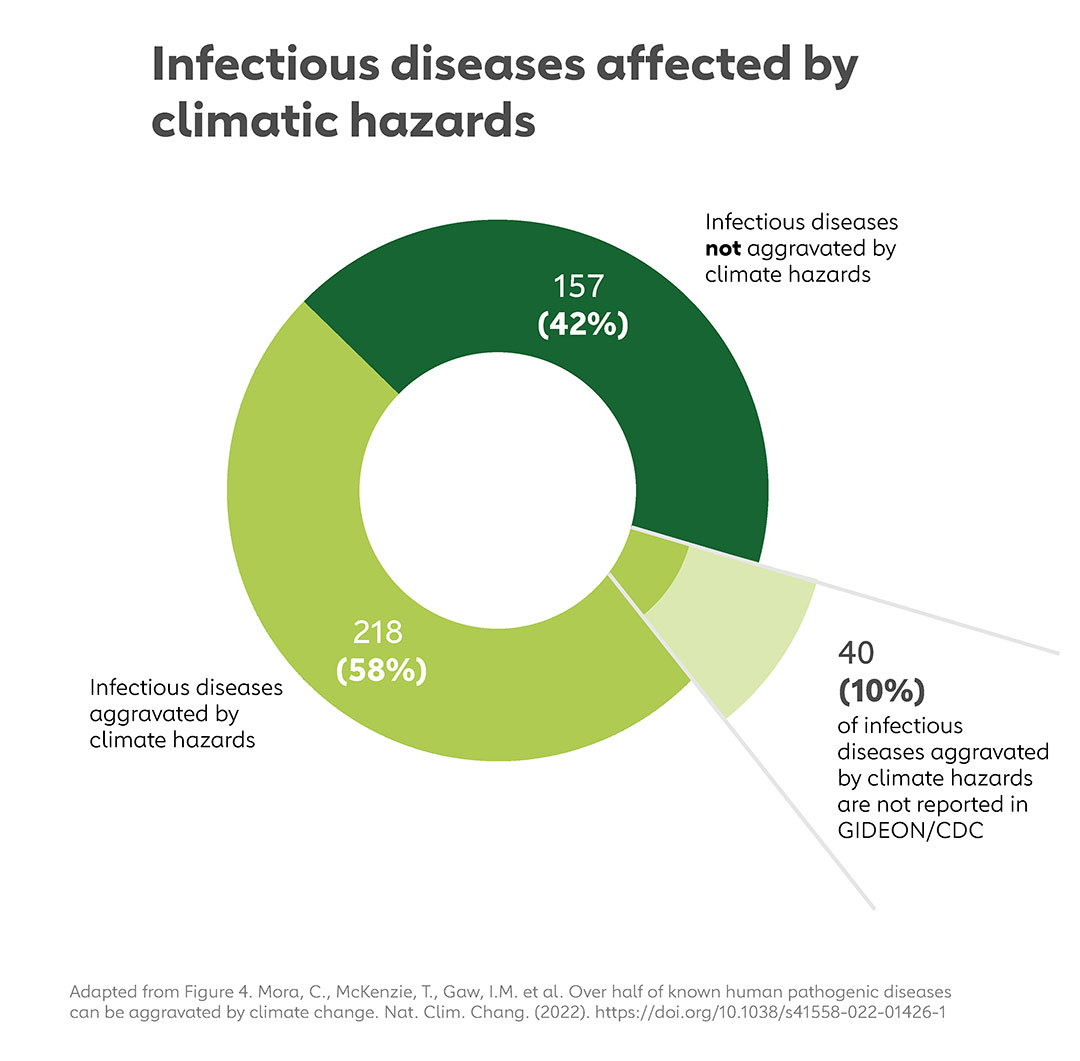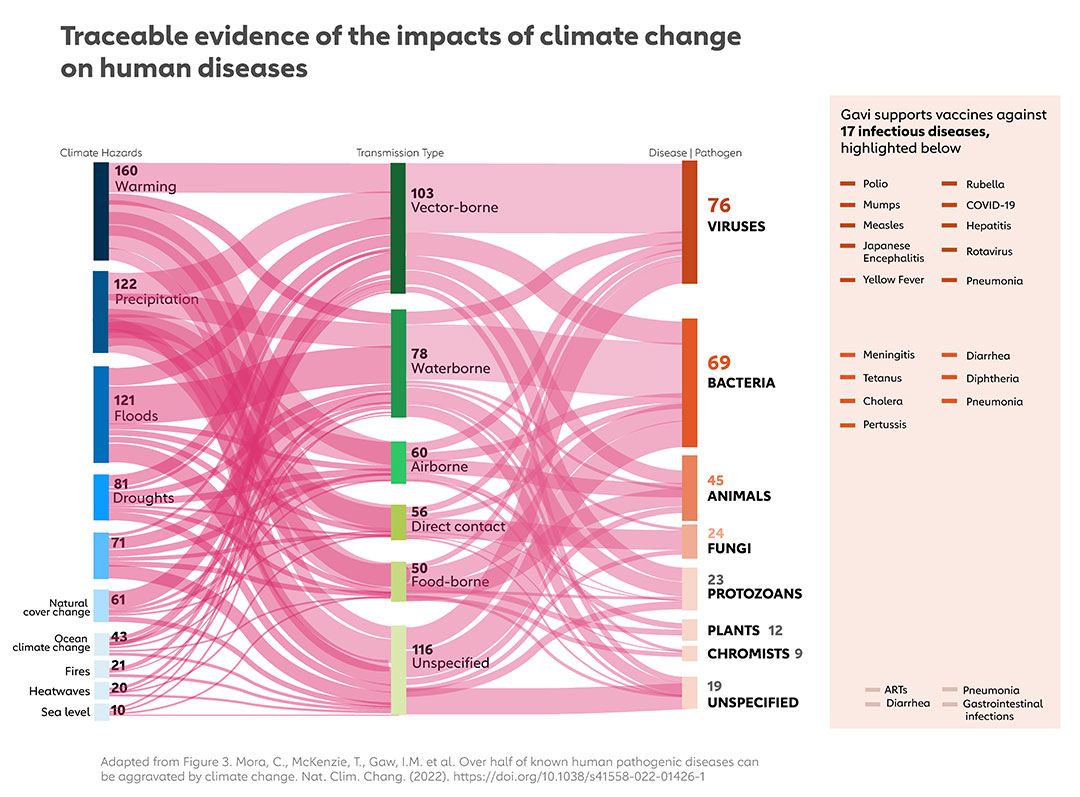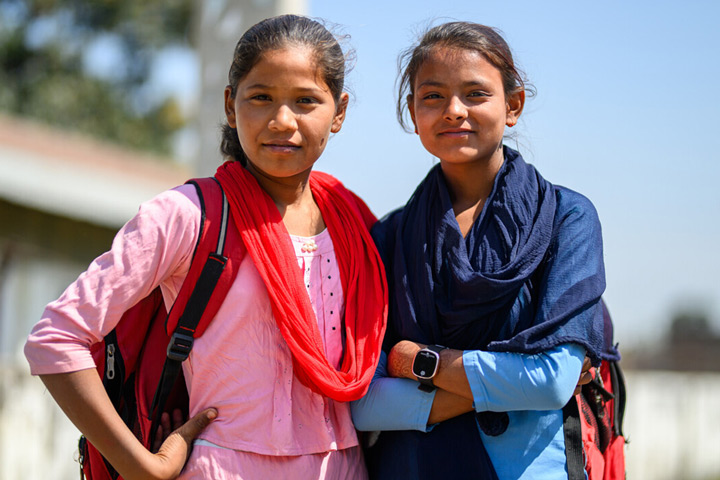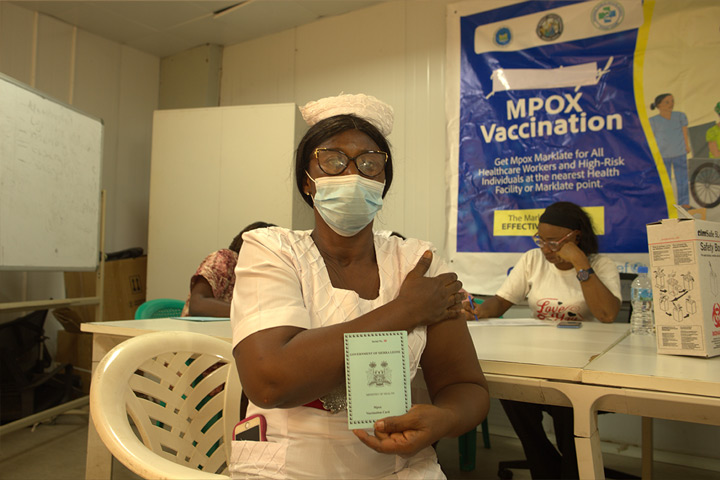The deadly diseases that are spiking because of climate change
Outbreaks of infectious diseases are now being linked directly to global warming, with the risk spreading beyond tropical regions to temperate zones too.
- 18 September 2023
- 4 min read
- by Priya Joi

By throwing our weather and climate systems into chaos, global warming is making extreme events like floods, droughts, hurricanes and tornadoes much more frequent.
Earlier this year, the World Health Organization warned that dengue and chikungunya are now spreading far beyond their previous geographical zones of transmission. Now, half the world’s population are at risk of the disease.
These planetary changes are happening way too quickly for people and animals to adapt and not only are they making our health more vulnerable, dramatic changes to the climate means that viruses, bacteria and parasites can spread more easily, and to places they have never shown up before.
Here, we round up some of our top stories in the past year, showing direct impacts on killer diseases.
1. Over half of all infectious diseases are made worse by climate change
A 2022 review published in Nature Climate Change showed that of 375 infectious diseases studied, 218 (58%) have been aggravated by climate change.


2. Flesh-eating bacteria edging into cooler waters
One of the most significant ways that a warmer planet affects infectious disease is by allowing pathogens or the insects that carry them to move into habitats that were previously too cold for them. This is happening with mosquito-borne illnesses, for instance, and now so-called ‘flesh-eating bacteria' or Vibrio vulnificus.
The bacterium lives in sea or brackish waters warmer than 20°C and can cause vomiting or diarrhoea. If it infects a wound, however, it can cause necrotising fasciitis, where the bacterium eats the flesh around the wound, in some cases leading to amputation. V vulnificus can kill one in five people it infects. Warmer sea temperatures mean that infections have risen eight-fold between 1988 and 2018 on the east coast of the US.
3. Erratic weather conditions causing cholera outbreaks
The world is in in the midst of a decades-long cholera pandemic, and the disease is both endemic in several countries and the right conditions can cause explosive outbreaks. Cholera is an acute diarrhoeal infection caused by eating food or drinking water that is contaminated with Vibrio cholerae.
This means that weather events such as floods in regions with inadequate water, sanitation and hygiene infrastructure cause the right conditions for an outbreak of this killer disease. Countries like Kenya are responding by stepping up surveillance and rolling out vaccine campaigns.
4. One in two of us are now at risk of dengue
Earlier this year, the World Health Organization warned that dengue and chikungunya are now spreading far beyond their previous geographical zones of transmission. Now, half the world's population are at risk of the disease. Severe dengue can cause persistent vomiting, bleeding gums and severe abdominal pain, with a high risk of death.
In Bangladesh, dengue cases are rising so quickly – with more than 2,000 cases a day – that Dhaka has converted its dedicated COVID-19 facility to a dengue hospital. Experts are blaming this current surge on weather shifts from climate change.
Similarly in Nepal, which has only started seeing dengue cases relatively recently, climate change is causing more and more cases. Winters are increasingly warmer with less snow, and these warmer temperatures mean that dengue-carrying Aedes mosquitoes can inhabit these mountainous areas. And this is worrying health experts, because once dengue is seen in an area it means that other mosquito-borne diseases like Japanese encephalitis and malaria are likely to be seen as well.
5. Malaria-spreading mosquitoes are expanding their habitats
Just as dengue-carrying mosquitoes are able to expand into higher altitudes as previously temperate regions become warmer, the anopheles mosquito that transmits the malaria parasite is also moving into areas that have never had to tackle the disease. Not only does this mean more cases overall worldwide, but it also means that areas that have rarely seen malaria before are now facing the challenge of controlling a disease that is easily spread.
In a study in Biology Letters earlier this year, researchers found that anopheles mosquitoes have elevated their range by about 6.5m per year and away from the Equator by 4.7km every year for the past century.








